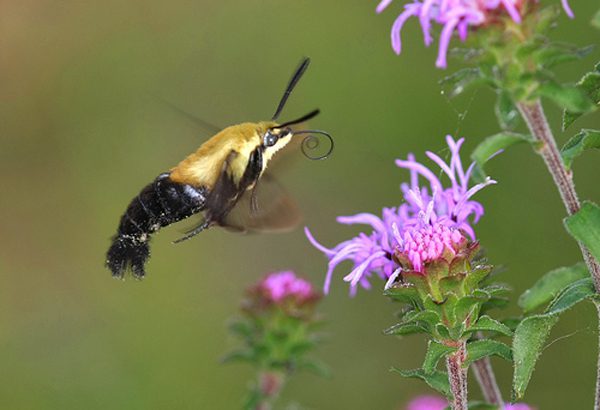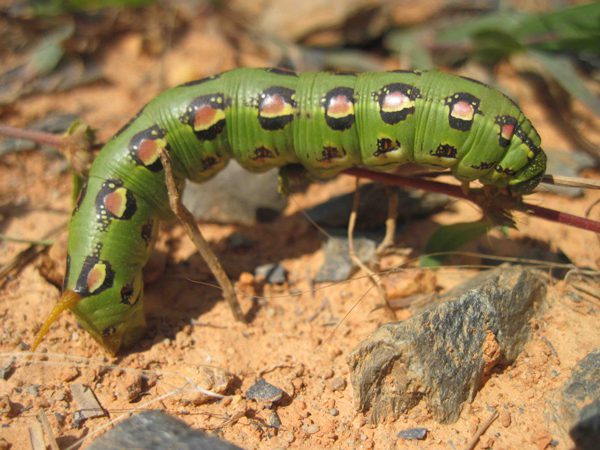The sphinx moth

Sphingidae is a family of moths that are commonly referred to as hummingbird, sphinx or hawk moths. Some of the largest moths on earth, they have a heavy body and narrow wings.
They are agile fliers and have the capability of rapid wing movement that allows them to hover over plants, and even move side to side as they do. As a result, they are occasionally confused for hummingbirds. Sphinx moths also have a long proboscis and feed on nectar like hummingbirds – preferring flowers with long tubes or spurs.
 Some species of Sphingidae do not have scales on their wings, making them almost clear or transparent. The larval stage of a sphinx moth is called a hornworm, as a result of the pointy hook or horn on the end of tail. Some hornworms can cause damage to crops, including tobacco and tomatoes. The name is believed to come from a behavior that larva exhibit. When at rest or as a defensive position, they will sometimes hold their head up and tuck their legs under it, in a manner that looks like the Egyptian sphinx.
Some species of Sphingidae do not have scales on their wings, making them almost clear or transparent. The larval stage of a sphinx moth is called a hornworm, as a result of the pointy hook or horn on the end of tail. Some hornworms can cause damage to crops, including tobacco and tomatoes. The name is believed to come from a behavior that larva exhibit. When at rest or as a defensive position, they will sometimes hold their head up and tuck their legs under it, in a manner that looks like the Egyptian sphinx.
There are estimated to be 1,450 species of Sphinx moth worldwide, and the majority of those are found in the tropics. About 125 species are found in North America. Most species are active either at dawn and dusk or at night, and those prefer pale flowers with long tubes and a sweet smell. Many species of these moths feed on a variety of plants, but some are the only pollinator for a given species, which is often the case for orchids.
The Darwin or Star orchid, Angraecum sesquipedale, is one such species. French botanist Louis-Marie Aubert du Petit-Thouars first discovered the orchid, but it was not described until years later. The orchid has an exceedingly long spur or tube where the nectar resides, much longer than the proboscis of any known moth at that time.
Naturalist Charles Darwin hypothesized that there must be an undiscovered moth with a proboscis long enough to pollinate it. He received some criticism for this conjecture among colleagues. It was more than 20 years after his death that the moth was seen, and his theory confirmed. That moth species is now known as Xanthopan morgani, or Morgan’s Sphinx, a very large hawk moth from East Africa and Madagascar.
There are a few possible explanations for why the flower has such a long spur and the moth is so large with a corresponding long proboscis. The most likely of these is that because the nectar of this flower resides at the bottom of the spur, while the pollen is in the flower itself, therefore the longer the spur the more likely the moth will obtain pollen on its head and body and then pollinate other plants it visits.
Because Sphinx moths typically come out only briefly at dawn and dusk, consider yourself lucky if you spot one. They are another distinctive species filling a unique role in the ecosystem, and one we still have much to learn about.